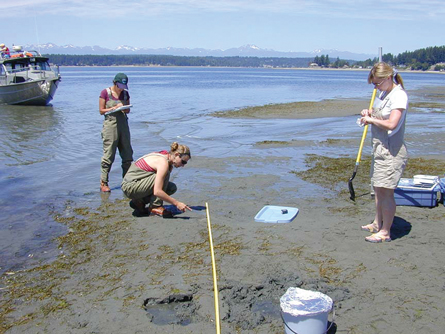Module 3 Intro
1. Module 3 Intro
1.27. Page 4
Module 3—Ecosystem Diversity
 Read
Read

Photo courtesy U.S. Environmental Protection Agency, Region 10
How is the population of burrowing owls calculated? Can every single burrowing owl be counted? No, this counting would be very time consuming and expensive. Instead, samples are used to estimate the population size. Many different sampling techniques exist that can be used to estimate populations in ecosystems. Transects and quadrats are two techniques discussed in your textbook.
transect: a long, relatively narrow rectangular area marked out in a study area for the purpose of sampling a population
quadrat: an area of determined size that is marked out for the purpose of sampling a population

© Ken Canning/shutterstock
Read pages 105 and 106 in your textbook to learn about transects and quadrats.
Another commonly used method for estimating populations is the capture/recapture method. This method allows you to estimate the size of a population by catching a small sample, tagging them, and then releasing them. The next step is to recapture a sample of the population and count the number of tagged individuals in the new sample. You can then use this information to calculate the estimated total population size using the following formula.
![]()
Rearrange the formula to estimate the total population.
![]()
Here is an example of how this formula is used.
Estimating Population Size Example
There are a few problems/precautions associated with this method of collecting data:
- The tag on the organism may make it more difficult to hide from predators, or the tag may actually harm the organism.
- Enough time must be left for the tagged organisms to mix with the population before the second sample can be taken.
 Self-Check
Self-Check
SC 8. Complete this Self-Check exercise.